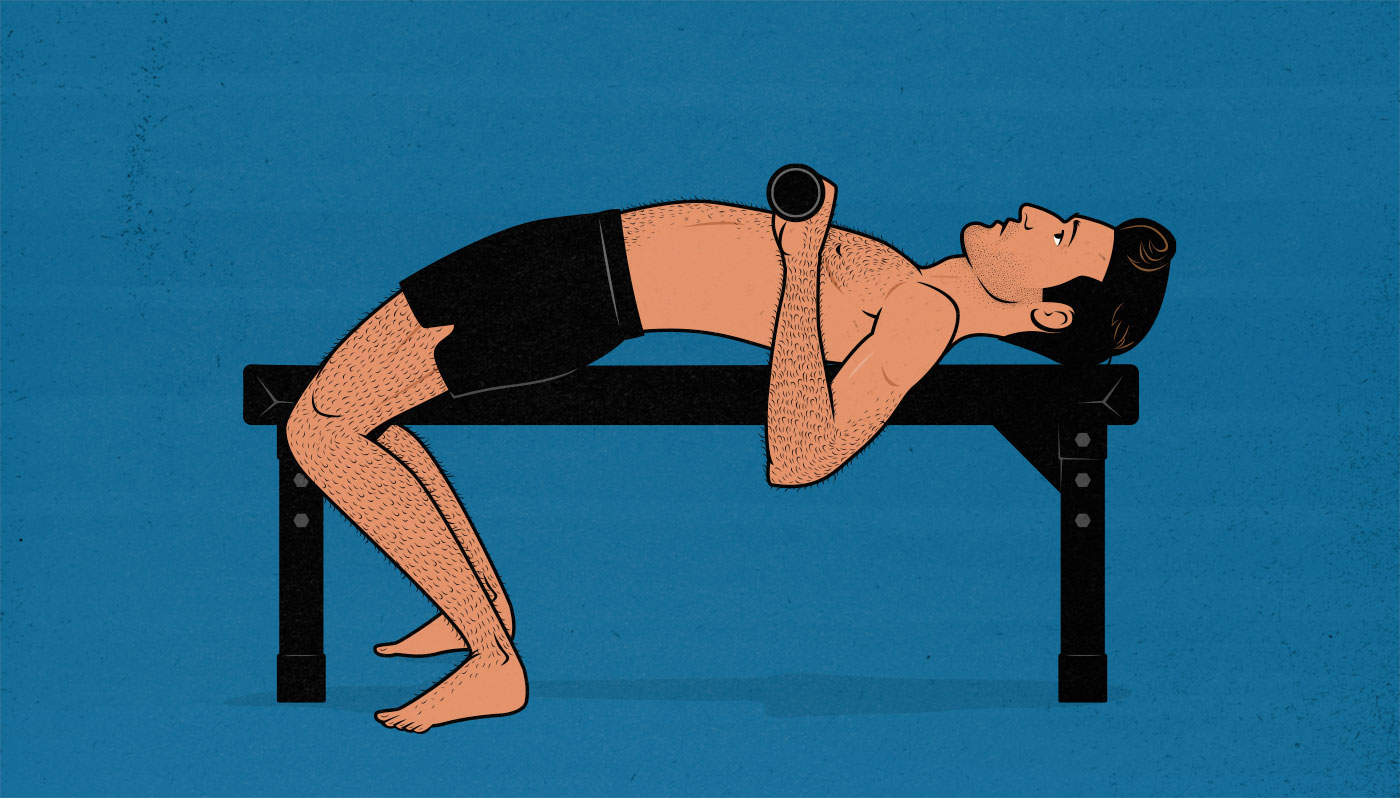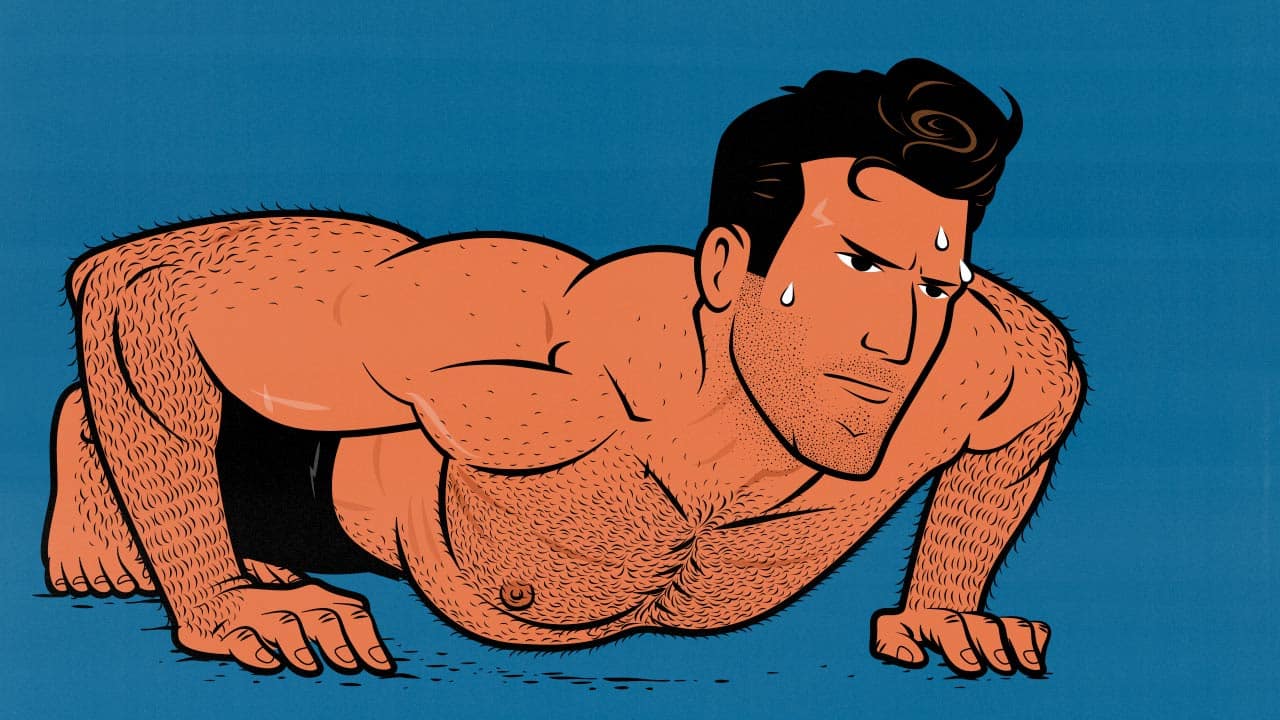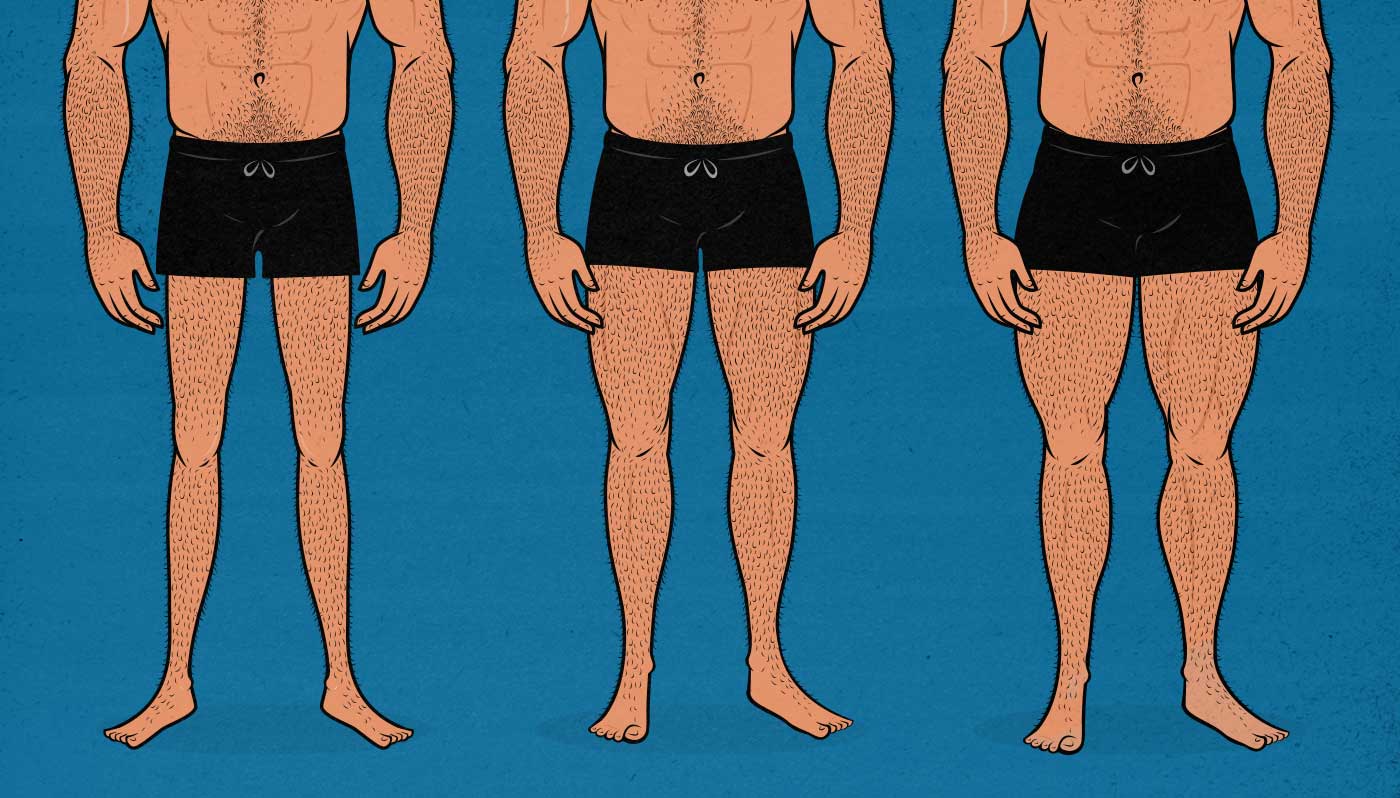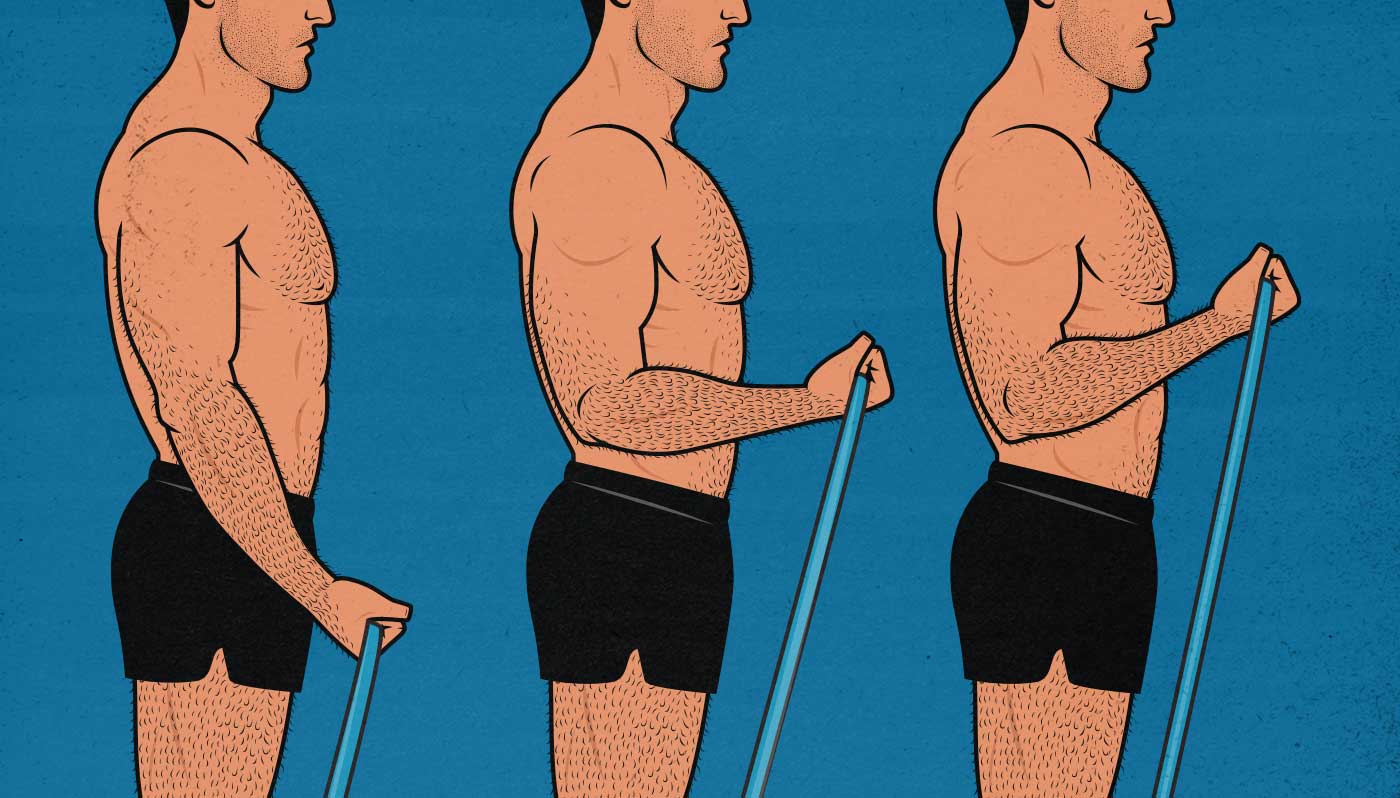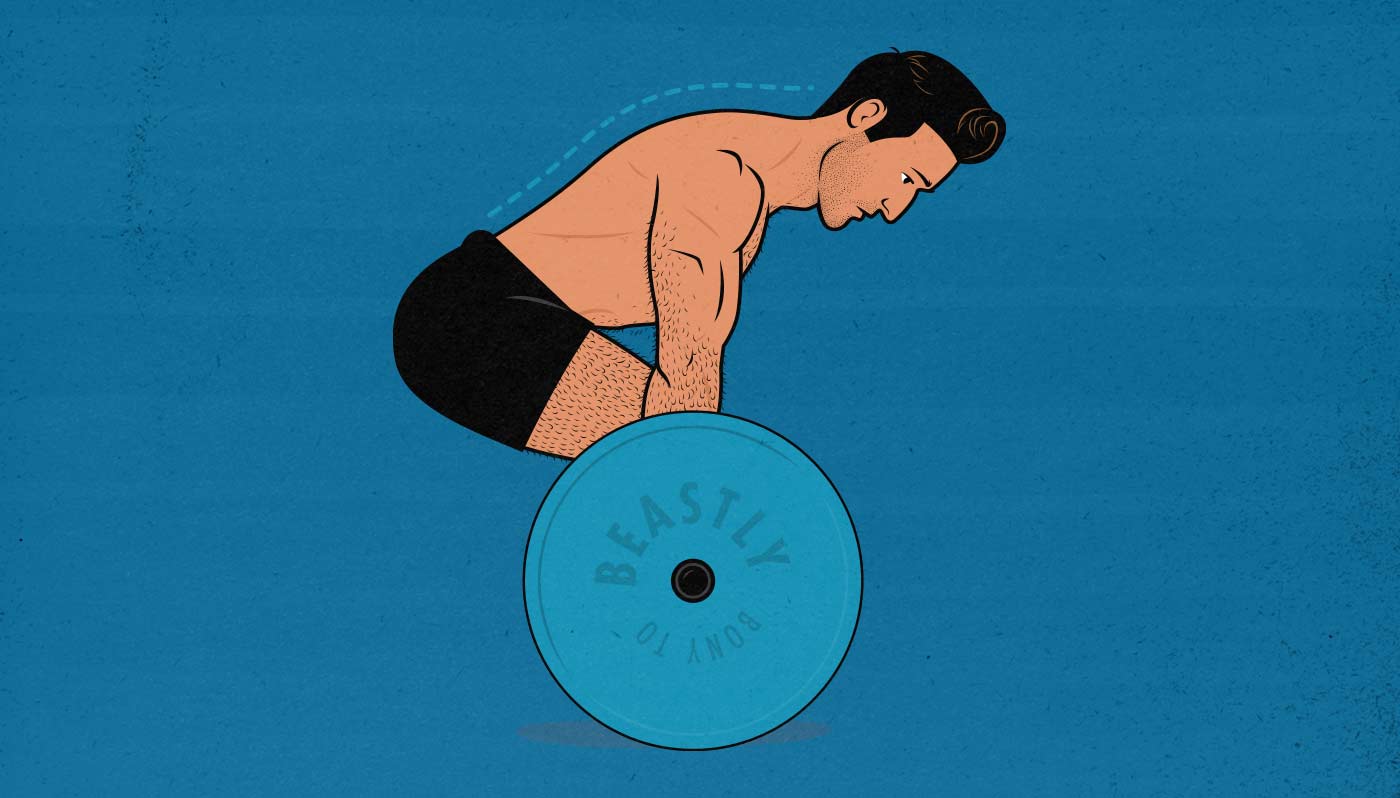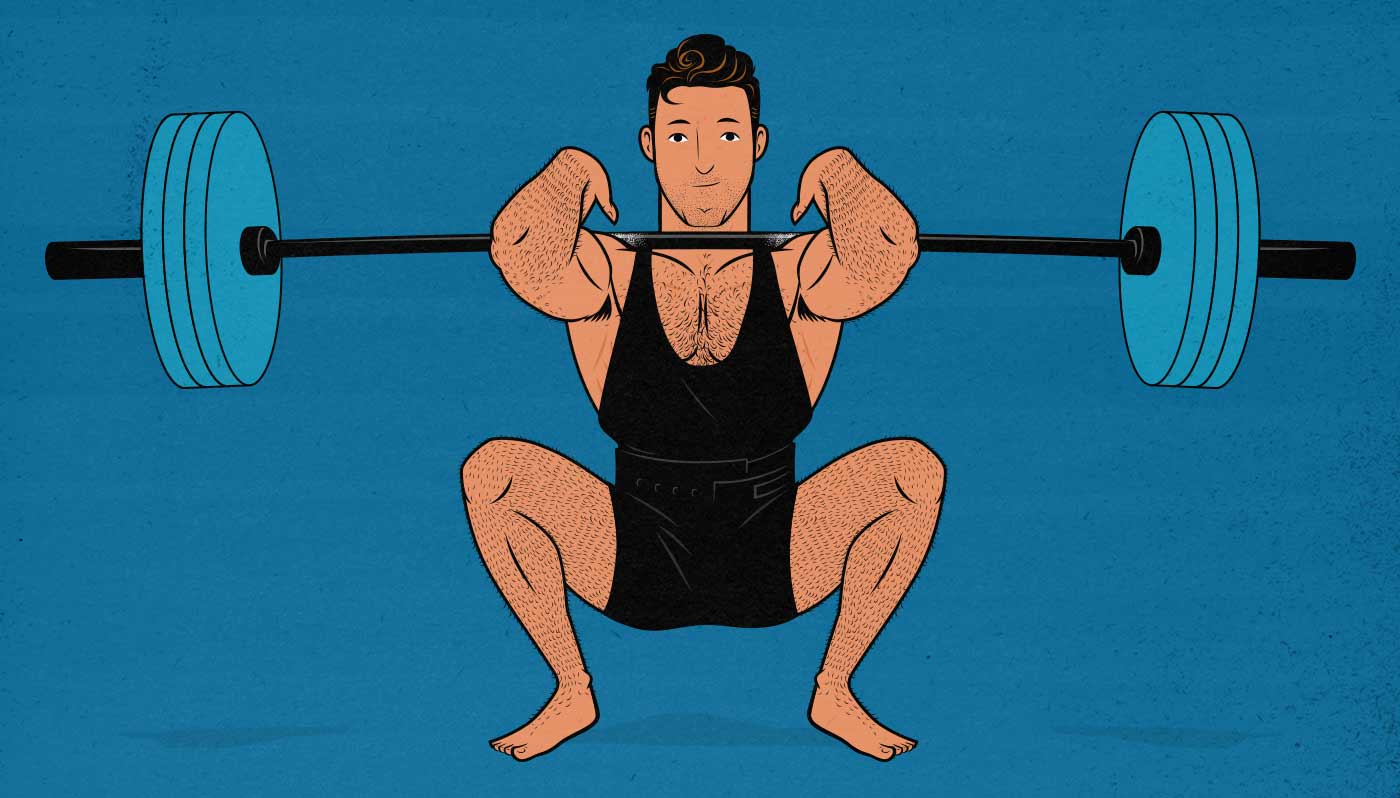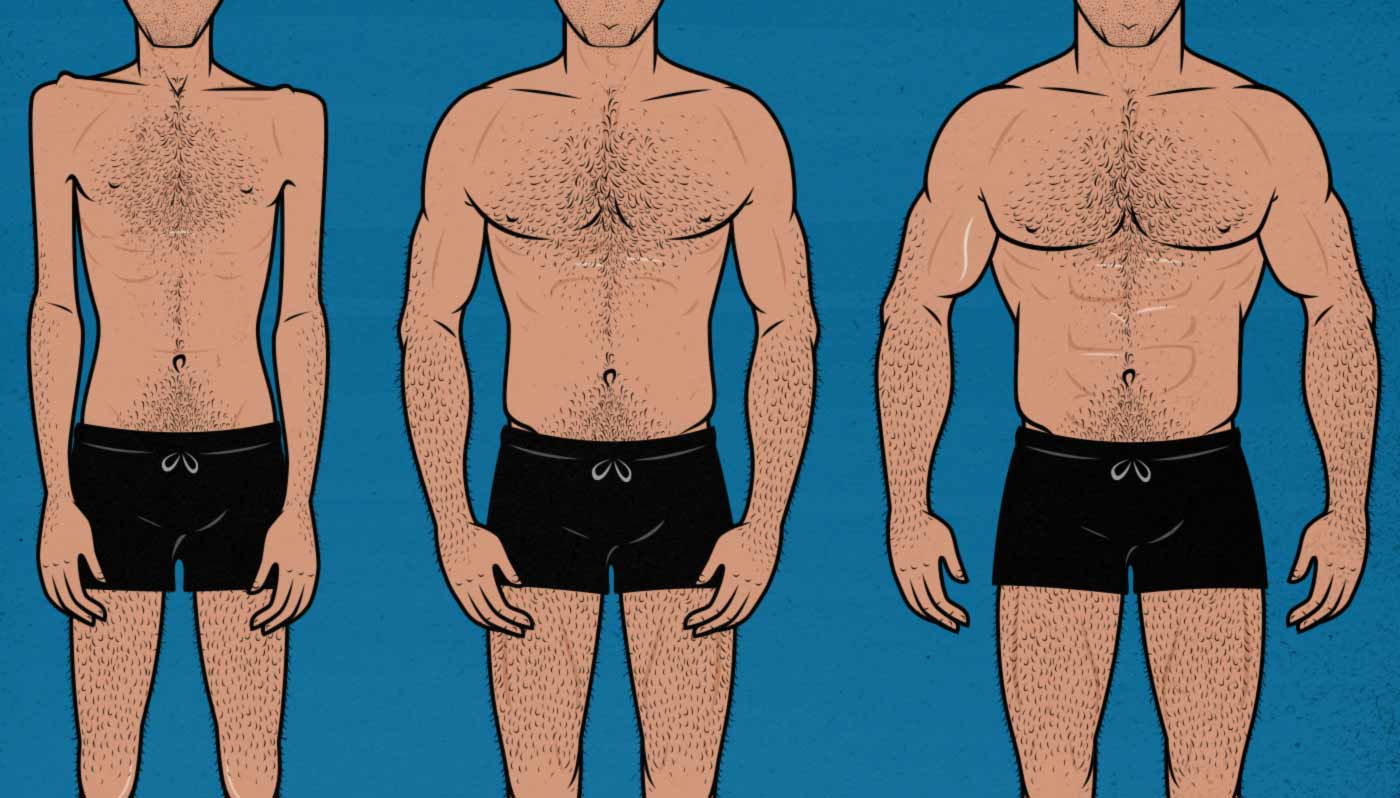Training
Should Beginners Lift to Muscle Failure?
As a new lifter trying to gain muscle size, how close to failure should you be lifting? Some argue that beginners should stop shy of failure, leaving a few reps in reserve (RIR). There’s some wisdom to that advice. It allows beginners to better practice their technique, reducing the risk of injury.
Others argue that beginners should take their sets all the way to muscular failure, ensuring they’re pushing themselves hard enough to stimulate a maximal amount of muscle growth with every set. But does taking a set all the way to failure actually stimulate more muscle growth? Let’s take a look at the research.
Finally, not every lift is the same. Some suit training to failure better than others. So, it’s not as simple as saying that a beginner should always train to failure or avoid training to failure. It often depends on the specific lift.
Read MoreEctomorph Workout Plan: Beginner Weight Training Routine
Skinny guys are often called “ectomorphs.” It’s a slang term referring to our thinner bones, narrower frames, shallower ribcages, or lankier limbs. Does being naturally thinner affect how we should exercise, lift weights, and build muscle?
Many of us ectomorphs also have atypical goals. Most people want to lose weight, we want to gain it. Most people intuitively eat too much food, we eat too little. We’re usually eager to bulk up, and we often have a hard time of it. Some may even worry they’ve got bad muscle-building genetics. Does that change how we should train?
Different workout programs are designed for people with different goals. Some, like CrossFit, are designed to improve our general fitness. Others, like Starting Strength and StrongLifts 5×5, are designed to improve our general strength. Still others, such as bodybuilding, seem entirely centred around helping naturally muscular guys gain even more muscle. What’s the best way to work out if we’re trying to gain muscle size?
So, how should ectomorphs work out?
Dive InA Review of Interesting Muscle-Building Research for Skinny Guys
In this article, let’s take a closer look at some of the most interesting research that could help us ectomorphs, hardgainers, and skinny guys bulk up, including studies looking into:
- How important are bicep curls for building bigger arms?
- Does muscle memory really exist?
- How long should we rest between sets?
- Does doing more sets increase muscle growth?
- What happens if we bulk on a ketogenic diet?
- Are high-protein diets healthy?
- Does having casein for bed help with muscle growth?
- Are 5×5 workouts good for building muscle?
- Are 10×10 German Volume Training workouts good for building muscle?
- Are push/pull/legs splits good for building muscle?
- Which lifestyle intervention caused simultaneous muscle growth and fat loss?
All of those answers and more inside.
Read MoreBeginner Bodyweight Workout Plan for Building Muscle—Full Guide
Bodyweight workout plans can be incredibly good for building muscle, especially in your upper body. If you put enough mechanical tension on your muscles, they’ll grow. That’s just as true with bodyweight exercises as it is with free weights or exercise machines.
However, most bodyweight workout plans are designed to help people get fitter, not more muscular. If you’re trying to build muscle, that won’t cut it. To maximize your rate of muscle growth, you need to train for muscle growth. You need to do bodyweight hypertrophy training.
In this article, we’ll teach you the best bodyweight exercises for building muscle, then give you a full hypertrophy training workout routine you can do at home.
Read MoreHow Big Should Men Build Their Legs?
What’s the ideal male leg size? How often should we be squatting and deadlifting? How much emphasis should we put on leg training if our goal is to improve our health, general strength, and appearance? What’s interesting is that there are popular views at opposite ends of the spectrum:
- Some aesthetics-oriented approaches have us spending more of our time doing upper-body training: more incline bench pressing, chin-ups, overhead pressing, and biceps curls. If lower-body training is included at all, it’s often lighter stuff, such as one-legged squats and Romanian deadlifts.
- Some strength training programs tell us to focus on getting stronger at the Big Three lifts: the squat, bench press, and deadlift. In those circles, it’s common for every workout to start with a few sets of strenuous back squats. Is that a good way to build a strong and attractive physique?
If we’re trying to build strong, healthy, and attractive physiques, how big should our legs be? How often should we train them? And what lower-body lifts should we choose?
Read MoreDo Resistance Bands Build Muscle? Yes, But How Well?
Resistance bands are cheap, portable, and convenient. They challenge our muscles. What more do we need? There’s a whole grain of truth there. Resistance bands can stimulate muscle growth. Plenty of people get great results from training with them. You don’t need anything more.
But what if you’re trying to build muscle as quickly, efficiently, or painlessly as possible? Are resistance bands the best tool for that? That’s a different question. In that case, we need to compare resistance bands against the alternatives: bodyweight exercises, dumbbells, barbells, and exercise machines.
So, how do resistance bands compare to callisthenics and free weights? Let’s delve into it.
Read MoreHow to Deadlift for Muscle Growth
Deadlifts are one of the only true full-body lifts. They challenge our muscles from our fingers down to our toes and stress our bodies from the skin on our palms all the way down to our bones. They’re hard, tiring, and absolutely amazing for building muscle, gaining strength, improving our fitness, and becoming much better-looking.
When it comes to bulking up, the only lift that can rival the deadlift in terms of sheer muscle growth is the squat (and especially the front squat). Even then, the deadlift has a few unique advantages:
- Deadlifts bulk up our traps, spinal erectors, and glutes, as well as a number of other muscles in our upper backs, all of which are great for improving our aesthetics.
- Deadlifts are one of the best ways to increase bone density and spine health, which is great for our health and longevity.
- The strength we develop with deadlifts transfers near-perfectly to our daily lives, making us look strong because we are strong.
- Squats and deadlifts train different muscles, with the front squat emphasizing the quads and upper back and the deadlift emphasizing the hamstrings, glutes, and entire back.
As with all the big lifts, though, there are several different ways of deadlifting, each with different pros and cons. And given how many different sorts of adaptations deadlifts provoke, it’s not surprising that some ways of deadlifting are much better for building muscle than others.
Most guys who are interested in strength favour the conventional deadlift. That’s wise—and we’ll explain why—but they deadlift for low reps and drop the bar to the ground after every repetition, making it worse for building muscle mass.
The most heinous sin, though, belongs to the bodybuilders who forego the deadlift altogether, thinking it isn’t a good lift for gaining muscle. That couldn’t be farther from the truth.
Read MoreThe Benefits of Goblet Squats & Front Squats
Squats are the biggest lift, engaging the most muscle mass and stimulating the most muscle growth. And of all the squat variations, front squats are the best for building muscle.
Powerlifters have low-bar squats, which allow them to lift more weight. Athletes have high-bar squats, which allow them to focus on their quads. We usually use goblet squats and front squats, which allow us to stimulate more overall muscle growth, especially in our postural muscles.
Front-loaded squats are a better default for almost everyone else. They let us squat deeper, thicken our back muscles, straighten our posture, and bulk up our serratus muscles. They’re also the safest squat variation, rivalled only by safety-bar squats and hack squats.
Here’s why.
Read MoreBulking Set Point and “Muscle Memory”
You could think of your body as having a built-in bodyweight thermostat. You might have your weight set at, say, 130 pounds. If you go above 135, your appetite automatically turns off until you get back to 130 pounds. If you go below 125 pounds, your appetite automatically turns on until you get back up to 130 pounds. There’s more at play here than just your appetite, but you get the idea: your body is automatically regulating your weight around a given “set point.”
When you’re bulking up, you’re fighting that set point. It’s trying to regulate your body weight back down. It’s trying to eliminate all the progress you’ve made.
So how do we get your set point to 150, 180 or even 200 pounds? Is that even possible? That’s what this article is about.
Read MoreAre You a Beginner, Intermediate, or Advanced Lifter?
How can you tell whether you’re a beginner, intermediate, or advanced lifter? That’s a good question. The answer can change which exercises you build your routine around, which workout program you pick, how quickly you can add weight to the bar, and how quickly you should gain weight.
Let’s delve into different ways of determining your lifting level. We’ll demonstrate why some of those methods are flawed, then cover a more useful way of doing it.
Dive In

